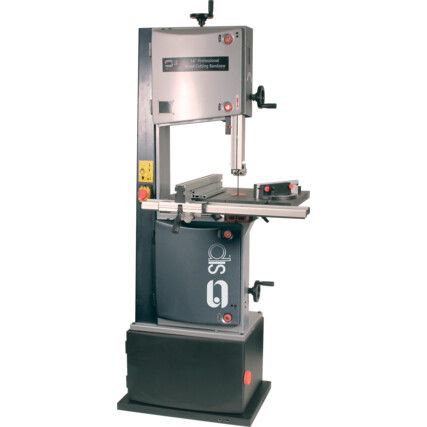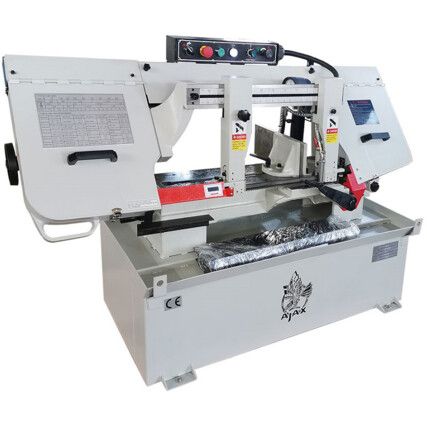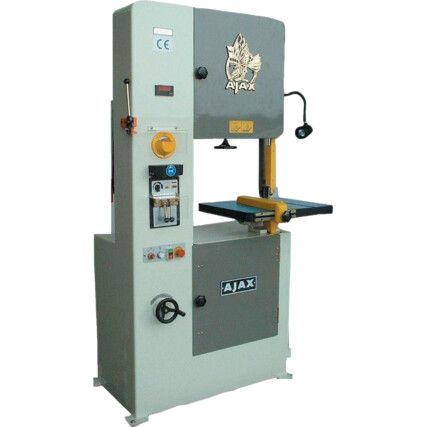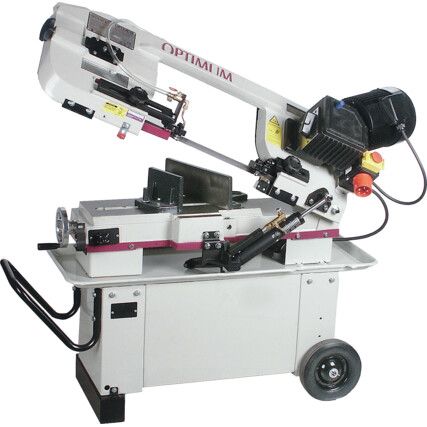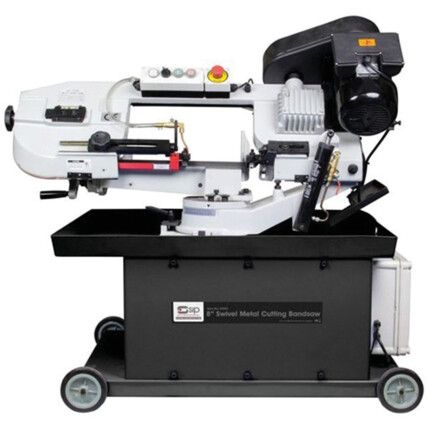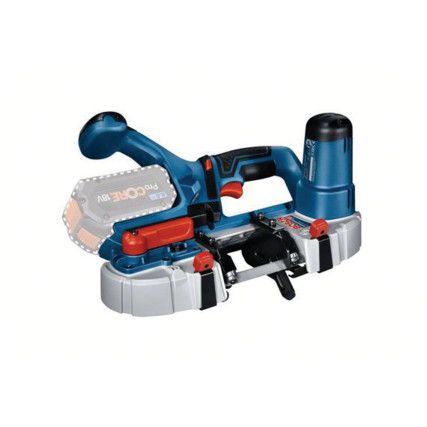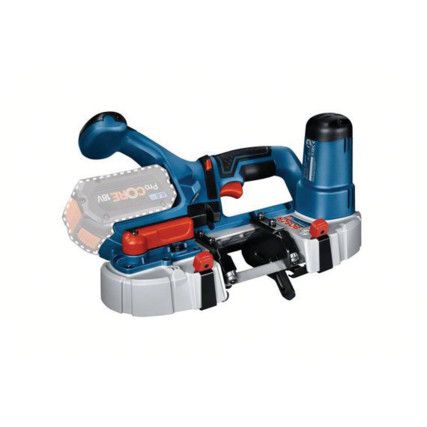Bandsaws
A staple of every professional workshop, bandsaws are designed specifically for the cutting of metal.
Metal bandsaws are known for offering exceptional yet reliable performance, and their ability to produce any kind of shape from metal stock is invaluable across a huge range of industries.
Cromwell stocks multiple types of metal bandsaws, from trusted brands such as SIP®, Hikoki®, Ajax Machine Tools®, and more.
What are metal bandsaws?
A bandsaw is a large, stationary cutting machine that comprises of a sharp steel blade with a serrated tooth edge, driven by a powerful motor. It can cut most types of metal with a high degree of accuracy and efficiency.
The blade cuts true thanks to it being tensioned over two pulleys - a top pulley that holds the blade steady and guides it, and a bottom pulley that provides the power and controls the speed.
Why a metal bandsaw?
Whilst hacksaws are suitable for infrequent metal cutting, when you need to cut metal frequenltly to a high level of precision or accuracy, bandsaws are the more suitable option.
The benefits of a metal cutting bandsaw over a traditional hacksaw are innumerable. They allow for quick and easy cuts while producing considerably less waste from their precise and effective cutting.
If you're looking to keep production costs low, metal cutting bandsaws are a great investment. Metal bandsaws are significantly more energy efficient than other metal cutters, using much less power than laser cutters whilst still providing a high level of accuracy.
When are metal bandsaws used?
The smooth, consistent metal cutting offered by a bandsaw has a wide range of uses across multiple industries and hobbies. A metal bandsaw can provide the following cuts:
• Straight Cuts - The most common cut - quickly performed with any bandsaw that has a sharp blade. Most metal cutting blades effectively cut steel, brass, aluminium and other non-ferrous metals.
• Cross Cuts - Create cross cuts easily with a 'cross cut sled' an incredibly useful addition to any bandsaw. The sled features a clamping system to hold the metal in place.
• Mitre Cuts - Similar to cross cuts, mitre angles are usually cuts performed at 45 degrees and are easily achieved with any bandsaw. These are performed with a mitre fence on vertical bandsaws.
These are only a few of the cuts commonly performed by a metal cutting bandsaw. If you need help picking the right tools for your profession or hobby, click here to ask our experts for specialised advice.
Types of metal bandsaw
When purchasing a metal bandsaw, you have two main considerations - horizontal or vertical.
• Horizontal Bandsaw - A staple in most metalworking professions, horizontal bandsaws use long blades to quickly cut large bits of metal. The workpiece is held in place with a vice as the blade cuts in a horizontal motion, making fast downed cuts.
Due to their extremely high cut rate, horizontal bandsaws are typically used for cutting large, thick pieces of metal, and can even be set up to cut automatically. They're excellent at providing perfectly square cuts on strong metals, such as stainless steel.
• Vertical Bandsaw - Vertical bandsaws are typically used for woodworking applications, however they're just as useful in any metalworking or engineering workshop. This is due to their precision when performing curved, complicated cuts or any kind of sheet metal work.
Smaller workshops and hobbyists may appreciate the vertical bandsaw for its small footprint when compared to horizontal models. Due to their vertical blade, they provide a more 'hands on' approach to cutting - perfect for angle cutting or mitre cuts.
Ultimately, when purchasing a bandsaw, it's important to figure out the types of cuts you're going to be making. For perfectly square pieces and a high working turnover, a horizontal bandsaw would be ideal. If you're producing angled pieces with difficult, intricate cuts - a vertical bandsaw would be better suited to your needs.
Once you've decided on the type of bandsaw, the next most important consideration is the bandsaw blade you'll be using. It's the one piece that directly affects your work, after all. Ensure the blade you get is suitable for cutting the metals you work with, then decide on the blade teeth type. The teeth directly affect how your bandsaw cuts.
• Regular-tooth Blades - The most common type of blade toothing, these blades consist of highly uniform straight-facing teeth with deep gullets. The close spacing makes them ideal for cutting thinner stocks or sheet metals. Regular-tooth blades have a completely straight 0° rake.
• Skip-tooth Blades - Ideal for cutting non-ferrous metals, skip-tooth blades boast a wide tooth spacing and shallow gullets to prevent clogging and waste buildup. They have sharp angled (90°) teeth that direct metal shavings away from the blade and a 0° rake.
• Hook-tooth Blades - Another common type of bandsaw blade amongst metalworkers, hook-tooth blades boast very widely spaced teeth with deep gullets for rough yet incredibly rapid cuts. They have a positive 10° rake that makes them ideal for performing long cuts, and due to their tooth spacing they excel at cutting thick metals with ease.
Considerations when choosing a metal bandsaw
• Variable Speed - For optimal cutting, different materials will demand specific cutting speeds. Look for a machine that has a diverse range of cutting speeds if you plan on cutting a wide range of metals.
• Available Space - A bigger machine allows you to cut bigger pieces with ease, so it's important to consider tool usability vs. available workshop space.
• Budget- As with anything, a higher budget will get you a more powerful machine. To aid you with choosing the right tool that meets your requirements on a budget that suits you, our experts are on hand to offer personalised advice.
• Coolant System - If you're in the market for a larger machine to perform bigger cuts, a coolant system is vital for prolonging the life of the bandsaw and its blade. Whilst you can get away with not having a coolant system if you only use your bandsaw sporadically, we recommend some sort of cooling system on any bandsaw.
• Construction - Similar to other large stationary power tools, cast iron or solid steel construction is vital. Bandsaws create a lot of vibration that will disrupt the accuracy of your cut if not dampened by solid tool construction materials.
• Hydraulic Downfeed - Smaller bandsaws are likely to have a spring downfeed system. A hydraulic downfeed offers consistent blade pressure when cutting automatically, delivering a reliable cut and prolonging blade life.
Metal bandsaw jargon buster
We want to make it easier for you to understand the technical terms when purchasing a bandsaw. Here are some key phrases and technical information used in professional air sanding.
• Blade rake - The rake of your blade is the amount of forward or backward lean each tooth has. This is important as it determines the angle the blade tips enter the workpiece, and it affects the type and efficiency of your cut.
• Cutting rate - This refers to the material removed over a set period, typically measured in square inches per minute.
• Depth of penetration - This refers to how far down into the stock or material the tooth tip penetrates with every cut.
What BS EN is relevant to air sanders?
• BS EN 1807 2013+A1:2009 is the safety of woodworking machines and bandsawing machines.
• BS EN ISO 13857:2008 details safety requirements for machine working distances and hazard zones.
FAQs
Should I wear gloves using a bandsaw?
In most cases we recommend against using gloves for safety reasons. Sometimes gloves can get caught in the blade, which can lead to severe injuries.
Can a metal bandsaw cut wood?
This all depends on the blade you're using. Ensure you have a blade fitted that's suitable for wood cutting before attempting it.
What speed for metal bandsaw?
Again, this largely depends on the material you're cutting. Most bandsaws have adjustable speeds to accommodate cutting a variety of woods and metals. Your bandsaw should come with a guide to give you the ideal speeds for common materials.
